
United States Department of Agriculture
Farm Service Agency
June 2012
FSA-BR-01
The U.S. Department of Agriculture (USDA) prohibits discrimination in all its programs and activities on the
basis of race, color, national origin, age, disability, and where applicable, sex, marital status, familial status,
parental status, religion, sexual orientation, genetic information, political beliefs, reprisal, or because all or
part of an individual's income is derived from any public assistance program. (Not all prohibited bases
apply to all programs.) Persons with disabilities who require alternative means for communication of
program information (Braille, large print, audiotape, etc.) should contact USDA's TARGET Center at
(202) 720-2600 (voice and TDD). To file a complaint of discrimination, write to USDA, Assistant Secretary
for Civil Rights, Office of the Assistant Secretary for Civil Rights, 1400 Independence Avenue, S.W.,
Stop 9410, Washington, DC 20250-9410, or call toll-free at (866) 632-9992 (English) or
(800) 877-8339 (TDD) or (866) 377-8642 (English Federal-relay) or (800) 845-6136 (Spanish Federal-relay).
USDA is an equal opportunity provider and employer.
United States Department of Agriculture
F
arm Service Agency
Your Guide to FSA Farm Loans

Your Guide to FSA Farm Loans
Purpose of This Guide
Who should read this guide?
is guide was written for people who need
assistance starting, expanding, or owning a farm or
ranch. If you are thinking about borrowing money
to start or expand your business, it is a good idea
to ask yourself several questions before you begin.
Before you borrow money, you need to invest time
in learning about your options and the procedures
to apply for a loan. is guide will help you identify
concerns and questions you may have before you
start the loan process.
It may be helpful to use this guide with someone
who can direct you to more sources of farming
or ranching information, such as an experienced
farmer or rancher, community-based organization,
or other service provider. You may want to involve
your family when reviewing this guide to make sure
everyone understands the process and risks involved
in owning a business and borrowing money.
1

Your Guide to FSA Farm Loans
2

Your Guide to FSA Farm Loans
3
Table of Contents
Introduction to the Farm Service Agency’s Farm Loan Programs ................. 6
• Guaranteed Loan Program
• Direct Loan Program
• Land Contract Guarantee Program
What Types of Loans Are Available? ................................................................ 9
- Overview
- Description of Loan Types
- Loan Rates and Terms
- Targeted Funds for Beginning and Socially Disadvantaged
Farmers and Ranchers
- Eligibility Requirements
Why Do You Need a Business Plan? .............................................................. 22
• e Purpose of Your Business Plan
• Business Plan Guides for Farmers and Ranchers
• Obtaining Assistance To Develop Your Business Plan
• Business Plan Formats
• Business Plan Guidelines
How Do You Apply for a Guaranteed Loan? .................................................. 32
• Preparing a Guaranteed Loan Application
• Submitting a Guaranteed Loan Application
What Happens After Your Lender Submits a
Guaranteed Loan Application to FSA? ........................................................... 33
• FSA’s Processing of the Guaranteed Application
• If the Application for a Guarantee Is Approved
• If the Application for a Guarantee Is Not Approved

Your Guide to FSA Farm Loans
How Will Your Guaranteed Loan Be Serviced? .............................................. 36
• Lender Responsibilities
• Your Responsibilities
• FSA Responsibilities
How Do You Apply for a Direct Loan? ............................................................ 37
• Preparing Your Direct Loan Application
• Submitting Your Direct Loan Application
What Happens After You Submit Your
Direct Loan Application to FSA? .................................................................... 41
• FSA’s Processing of Your Direct Loan Application
• If Your Direct Loan Is Approved
• If Your Direct Loan Is Not Approved
What Are Your Responsibilities as a Direct Loan Borrower?........................ 47
What Credit Supervision Does FSA Provide to
Direct Loan Borrowers? .................................................................................. 49
• Year-End Analyses
• Chattel Checks
• Normal Income Security
• Basic Security
• Graduating to Commercial Credit
What Loan Servicing Options Will Be Available to
Direct Loan Borrowers? .................................................................................. 51
• Disaster Set-Aside (DSA)
• Primary Loan Servicing (PLS) for Financially Distressed and
Delinquent Borrowers
How Do You Apply for a Land Contract Guarantee? ..................................... 55
• Preparing a Land Contract Guarantee Application
• Submitting a Land Contract Guarantee Application
4

Your Guide to FSA Farm Loans
What Happens After You or the Seller Submits a
Land Contract Guarantee Application? .......................................................... 57
• FSA’s Processing of the Land Contract Guarantee Application
• If the Application for a Land Contract Guarantee Is Approved
• If the Application for a Land Contract Guarantee Is Not Approved
How Will Your Land Contract Guarantee Be Serviced? ................................ 59
• Escrow or Servicing Agent Responsibilities
• Your Responsibilities
Special Considerations for American Indian/Alaskan
Native Producers and/or Any Producer Utilizing Land
Held in Trust by the Bureau of Indian Affairs ................................................. 60
Appendix A: Resources and Contact Information ........................................ 61
• USDA Agencies
• Other Organizations
• Additional Resources for American Indians/Alaskan Natives
Appendix B: Definition of Terms .................................................................... 70
5
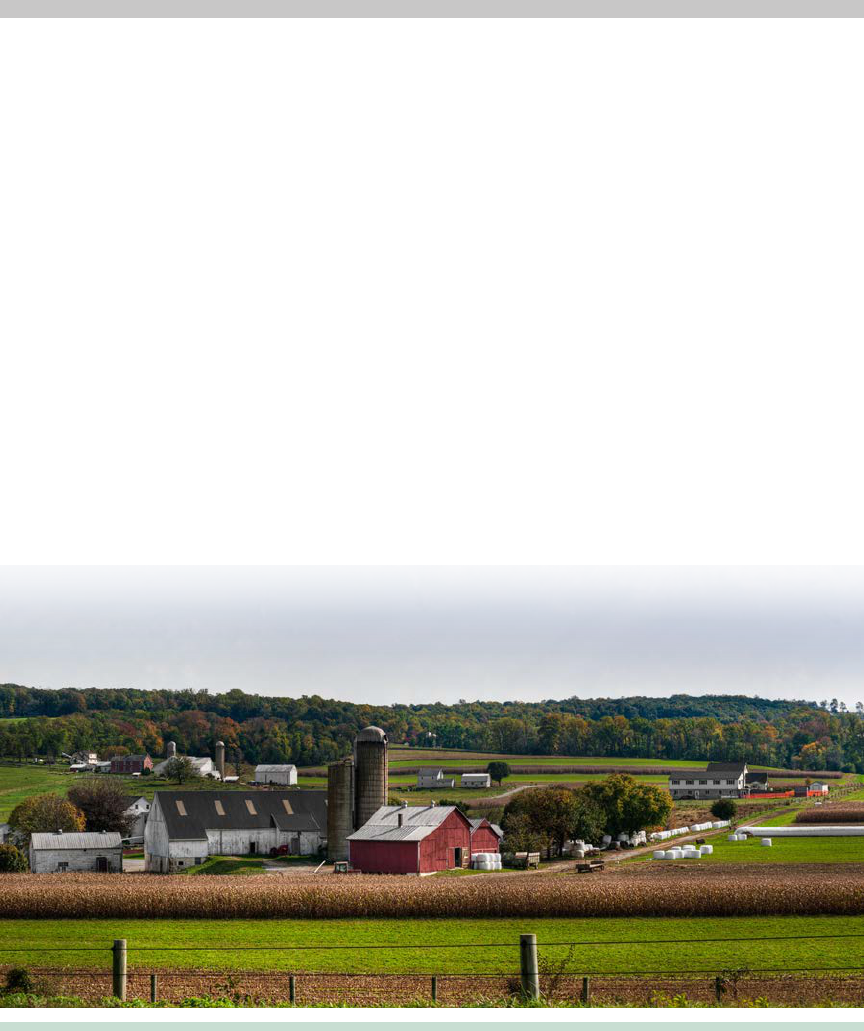
Your Guide to FSA Farm Loans
Introduction to the Farm Service Agency’s
Farm Loan Programs
As a farmer or rancher, whether you are just starting out or have many years of
experience, there are times when you need to borrow money to start, expand,
sustain, or make changes to your business. If you are thinking about applying
for a loan, consider the following:
•
Do you want to buy or lease a farm or ranch?
• Do you need to buy things like a tractor, livestock, irrigation pipes, or a
greenhouse for your farm or ranch?
• Do you already own or rent farmland/ranchland and want to expand your
business?
• Has a natural disaster, such as drought, ooding, or a bad storm, ruined your
crops or damaged your farm buildings or equipment?
6

Your Guide to FSA Farm Loans
If you answered ‘yes’ to any of these questions, you may want to apply for a
loan from the Farm Service Agency (FSA).
FSA is an agency of the U.S. Department of Agriculture (USDA). You may
be able to get a loan or loan guarantee through FSA’s Farm Loan Programs if
you are a farmer or rancher who is unable to obtain credit elsewhere to start,
purchase, sustain, or expand your family farm. Unlike loans from a commercial
lender, FSA loans are temporary in nature, and our goal is to help you graduate
to commercial credit. Once you are able to obtain credit from a commercial
lender, our mission of providing temporary, supervised credit is complete.
Appendix A provides a list of USDA agencies and other organizations that you
can contact for more information on agriculture, developing business plans, and
obtaining help in applying for a loan. You will nd denitions for some of the
terms used in this guide in Appendix B.
is guide will help you get started in the process of applying for an FSA loan
or obtaining a loan guarantee for your farm or ranch. FSA loan ocers can
help you with your application. For some parts of your application, such as
developing your business plan, you may need to ask for advice from a business
advisor or other professional. Everyone’s situation is dierent, so applying for a
loan may be dierent for you than for another farmer or rancher going through
the same process.
7

Your Guide to FSA Farm Loans
Guaranteed Loan Program
Guaranteed loans are made and serviced by
commercial lenders, such as banks, the Farm Credit
System, or credit unions. FSA guarantees the
lender’s loan against loss, up to 95 percent. FSA
has the responsibility of approving all eligible loan
guarantees and providing oversight of the lender’s
activities.
Direct Loan Program
Direct loans are made and serviced by FSA using
Government money. FSA has the responsibility
of providing credit counseling and supervision to
its direct borrowers by helping applicants evaluate
the adequacy of their real estate and facilities,
machinery and equipment, nancial and production
management, and goals.
Land Contract Guarantee Program
Land contract guarantees are available to the owner
of a farm or ranch who wishes to sell real estate
through a land contract to a beginning or socially
disadvantaged farmer or rancher.
8

Your Guide to FSA Farm Loans
9
What Types of Loans Are
Available?
Overview
FSA has dierent types of loans that you can apply
for, depending on your current situation and what
you need the loan for. is guide will help you
answer the following questions:
•
What type of loan do I need?
• Do I meet the requirements for a loan?
• What is the loan application process?
• What forms or documents do I need to apply?
Farm ownership, operating, and conservation
loans are available under the Guaranteed Loan
Program. Farm ownership, operating, emergency,
and conservation loans are available under the Direct
Loan Program. FSA oers two types of guarantees
under the Land Contract Guarantee Program.

Your Guide to FSA Farm Loans
10
Description of Loan Types
Before you apply, you need to decide what type of
loan you need. You may need to apply for more than
one type of loan at the same time if you need money
for dierent purposes. FSA loan types include the
following:
Farm Ownership loans will help you purchase or
enlarge a farm or ranch, construct a new or improve
an existing farm or ranch building, pay closing
costs, and pay for soil and water conservation and
protection.
Operating loans will help you purchase livestock
and equipment and pay for minor real estate repairs
and annual operating expenses.
Emergency loans will help you if you suered
a qualifying loss caused by natural disasters that
damaged your farming or ranching operation.
Emergency loan funds may be used to restore
or replace essential property, pay all or part of
production costs associated with the disaster year,
pay essential family living expenses, reorganize the
farming operation, and renance certain debts.
Conservation loans
will help you complete a
conservation practice in an approved conservation
plan.

Your Guide to FSA Farm Loans
11
Land contract guarantees provide certain nancial
guarantees to the seller of a farm or ranch through
a land contract sale to a beginning or socially
disadvantaged farmer or rancher. e seller may
request either of the following:
•
Prompt Payment Guarantee: A guarantee up to
the amount of three amortized annual
installments plus the cost of any related real
estate taxes and insurance. e seller must
choose a third-party escrow agent who will
handle transactions related to the contract.
• Standard Guarantee: A guarantee of
90 percent of the outstanding principal
balance under the land contract. e
seller must choose a third-party servicing
agent.
e chart on the next page provides additional details
for the dierent types of loans and the maximum
loan amounts. You may request any amount up
to the maximum. e rates and terms of the loan
address the interest rate that will be charged and the
maximum number of years you will make payments
on the loan.

Your Guide to FSA Farm Loans
12
Farm Loan Programs Information Chart
Type of Loan
Direct Farm Ownership
Direct Down Payment
Direct Operating
Direct Emergency
Guaranteed Farm
Ownership
Guaranteed Operating
Guaranteed Conservation
$300,000
The lowest of the following:
45% of the farm or ranch
purchase price
45% of the appraised value
$225,000
$300,000
The lowest of the following:
100% actual or physical
losses
$500,000
The maximum loan amount is
adjusted annually for inflation*
The maximum loan amount is
adjusted annually for inflation*
The maximum loan amount is
adjusted annually for inflation*
Te rm: Up to 40 years
Interest rate: fixed**
Te rm: Up to 20 years
Interest rate: fixed**
Te rm: 1 to 7 years
Interest rate: fixed**
Te rm: 1 to 7 years
(possibly up to 20 years)
for non-real estate purposes
Up to 40 years for physical
losses on real estate
Interest rate: fixed**
Te rm: Up to 40 years
The interest rate is negotiated
by you and your lender.
Te rm: 1 to 7 years
The interest rate is negotiated
by you and your lender.
Te rm: Up to 20 years
The interest rate is negotiated
by you and your lender.
Maximum Loan Amount
Rates and Terms

Your Guide to FSA Farm Loans
13
Farm Loan Programs Information Chart
Continued
Type of Loan
Land Contract Guarantee A maximum purchase price of
$500,000 on a new land contract
G
Term: Contract payments must
be amortized for a minimum of
20 years with equal payments
during the term of the
guarantee. The guarantee
period is 10 years.
G
Interest rates must be fixed and
cannot exceed the direct farm
ownership interest rate plus
3 percentage points.
Maximum Loan Amount
Rates and Terms
*To determine the maximum loan limit for the current year, please check with your local
FSA loan o cer at http://offi ces.sc.egov.usda.gov/locator/app or our website at
http://www.fsa.usda.gov/Internet/FSA_File/guaranteed_farm_loans.pdf.
**Direct loan interest rates are adjusted monthly and are posted online at
http://www.fsa.usda.gov/FSA/webapp?area=home&subject=fmlp&topic=fi r and at your
local FSA o ce. Once your loan is closed, the interest rate is xed at the rate in e ect on the
date of loan approval or loan closing, whichever is lower.
Note: FSA o ers other types of loans, such as marketing assistance loans and
farm storage facility loans. ese are not part of FSA’s Farm Loan Programs
and, therefore, may have di erent application or eligibility requirements. For
more information on these and other programs o ered by FSA, please visit our
website at http://www.fsa.usda.gov.

Your Guide to FSA Farm Loans
14
Loan Rates and Terms
When you receive a loan from FSA or another
lender, you have to pay back the loan amount
(principal), plus an additional amount of interest.
“Rate” is the interest rate charged on your loan from
FSA or your commercial lender. e period of time
you are making payments on the loan is called the
loan “term.” e amount of interest that you will
pay is based on the interest rate and loan term.
e interest rate is shown as a percentage rate
(%). A lower interest rate means that the cost of
borrowing the money is lower, so you pay a smaller
amount in interest. A higher interest rate means that
the cost is higher, and you will pay more to borrow
the money. Some interest rates are xed, which
means that the percentage rate (%) stays the same for
the entire time you are paying back your loan. Other
rates are variable, which means that the percentage
rate (%) can change periodically while you are
paying back your loan. With a variable interest rate,
the rate can either increase or decrease. FSA direct
loans and land contract guarantees have xed interest
rates. Guaranteed loans may have either xed or
variable interest rates.

Your Guide to FSA Farm Loans
15
e loan term is usually based on the use of the
loan funds and the collateral that secures the loan.
Generally, a loan made for real estate purposes will
have a longer term than a loan made to purchase
equipment or livestock. In addition, a loan that is
secured by real estate may have a longer term than
a loan secured by equipment or livestock. A longer
loan term will reduce your yearly payment amount,
but will increase your total interest cost.
Amortization is the established schedule for paying
o a debt over time through regular payments. It
is based on the interest rate and term of a loan, and
shows the amount of each payment put towards
interest, as well as the amount put towards the
principal balance. Initially, a large portion of each
payment is applied to interest. Over time, a larger
portion goes towards paying down the principal.
e example on the next page shows an amortization
schedule for a $30,000 operating loan with a
5-percent interest rate and a 7-year term. For each
of the 7 years, you can see how much of your yearly
payment goes toward paying interest and principal
on the loan.
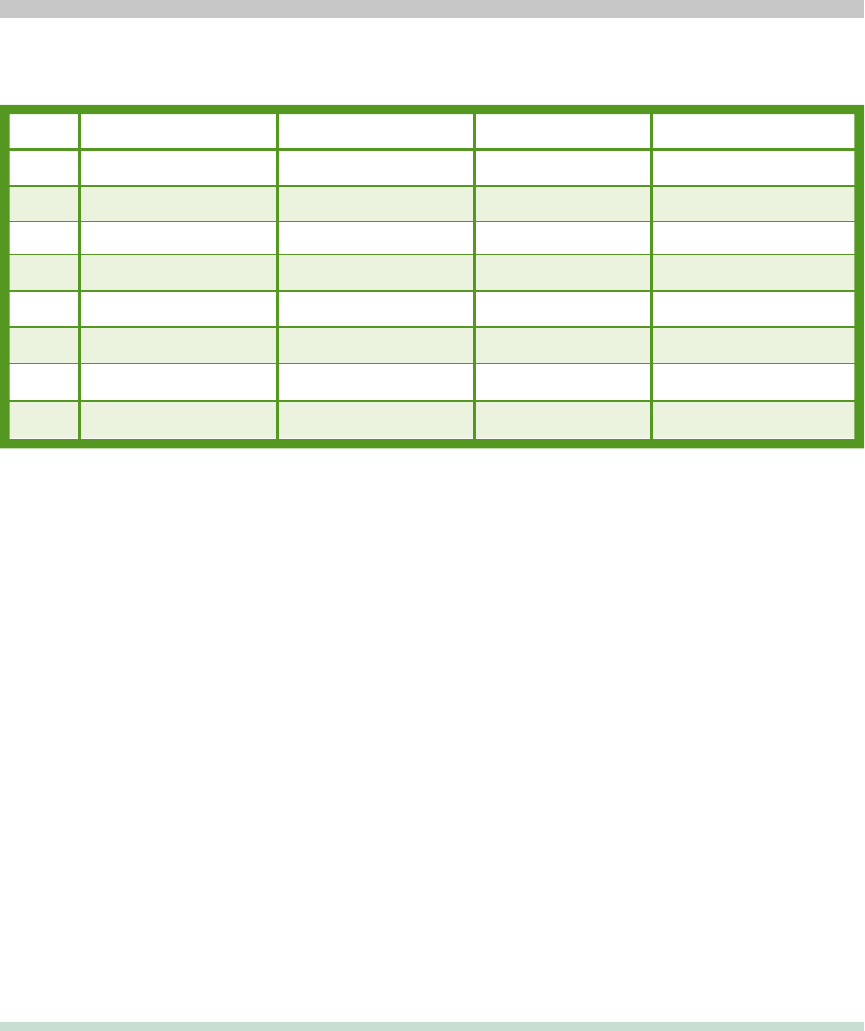
Your Guide to FSA Farm Loans
16
Amortization Schedule
Year
5.00% $30,000.00
1
2
3
4
5
6
7
$5,185.00
$5,185.00
$5,185.00
$5,185.00
$5,185.00
$5,185.00
$5,185.00
$3,685.00
$3,871.00
$4,063.00
$4,266.00
$4,479.00
$4,703.00
$4,933.00
$1,500.00
$1,314.00
$1,122.00
$919.00
$706.00
$482.00
$252.00
$26,315.00
$22,444.00
$18,381.00
$14,115.00
$9,636.00
$4,933.00
$0.00
Annual Payment Principal Interest Loan Balance
Targeted Funds for Beginning and Socially Disadvantaged
Farmers and Ranchers
FSA is referred to as the “Lender of First Opportunity” because each year it
targets some of the direct and guaranteed loan funds for beginning and socially
disadvantaged farmers or ranchers. FSA sets aside money specically to help
farmers or ranchers who are just starting up, or who are members of a group
which has been subjected to racial, ethnic, or gender prejudice because of their
identity, without regard to their individual qualities. In addition, land contract
guarantees are only available on land contracts to a beginning or socially
disadvantaged farmer or rancher.
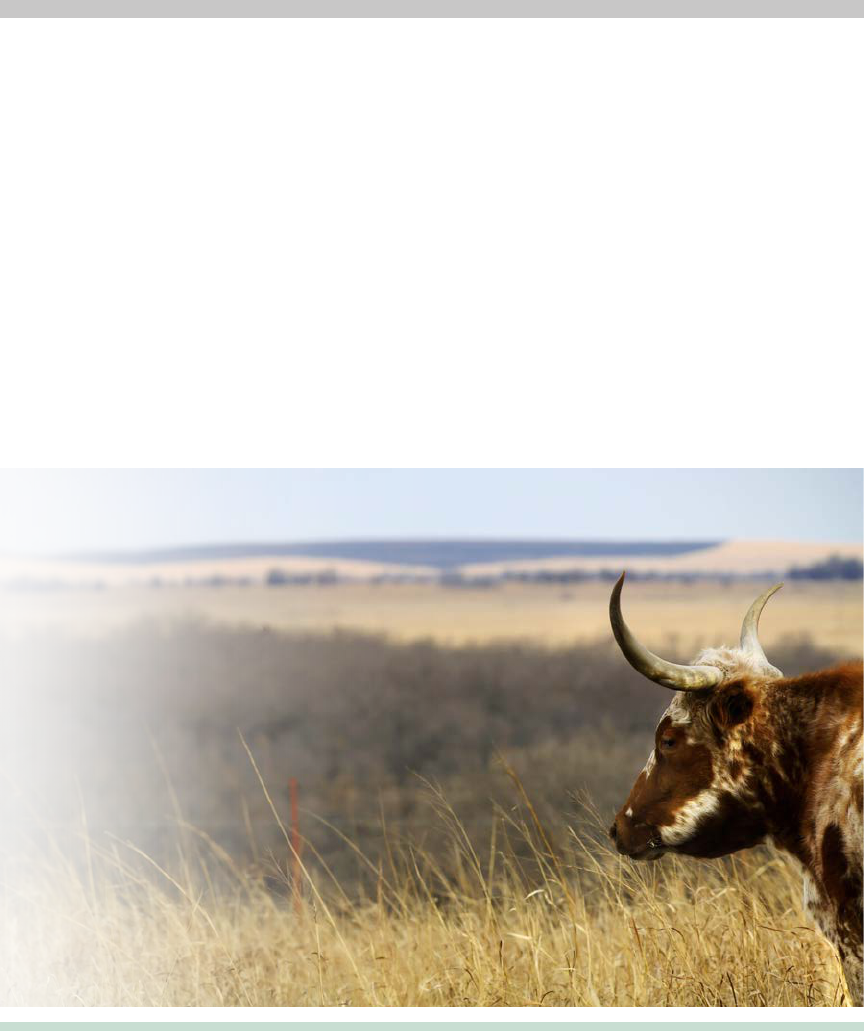
Your Guide to FSA Farm Loans
17
You may qualify for direct or guaranteed loan funds as a beginning farmer or
rancher if you started farming or ranching less than 10 years ago. You are a
socially disadvantaged farmer or rancher if you are:
•
American Indian or Alaskan Native
• Asian
• Black or African American
• Native Hawaiian or other Pacic Islander
• Hispanic
• a Woman

Your Guide to FSA Farm Loans
18
Eligibility Requirements
Depending on the type of loan you want, you will have to meet certain
eligibility requirements. Dierent types of loans have dierent eligibility
requirements. Examples of general eligibility requirements are below. If you
answer “no” to any of the requirements, we recommend that you discuss the
requirement further with an FSA loan ocer.
Eligibility Requirements for Direct Loans (farm ownership,
operating, emergency)
I have the training, education, or experience that will enable me to eectively
manage my farm or ranch.
For farm ownership loans only: I have participated in the business operations
of a farm or ranch for at least 3 out of the last 10 years.
For beginning farmer or rancher targeted funds only: I have operated a farm
or ranch for 10 years or less.
For beginning farmer or rancher targeted funds only: If I currently own a
farm or ranch, it is less than 30% of the median farm size in my county.
For down payment loans only: I can make a cash down payment of at least
5% of the purchase price for the farm or ranch I want to buy, and its price is
less than $500,000.
For emergency loans only: My operation is in a county that has a disaster
designation, and it has not been more than 8 months since the designation
was declared. I suered a production loss (at least 30%) or a physical loss due
to the designated disaster.
YES NO

Your Guide to FSA Farm Loans
19
Eligibility Requirements for Direct Loans (farm ownership,
operating, emergency) Continued
I am a citizen of the United States, a non-citizen national, or a qualied alien.
I possess the legal capacity to obtain a loan.
I am unable to obtain credit elsewhere at reasonable rates and terms.
I can show that I have a good credit history (I pay my bills on time) or, if I
do not, I can show that my failure to pay my bills was due to circumstances
beyond my control, was infrequent, or did not happen recently.
My operation is a family farm or ranch, and the majority of the physical labor
and management is provided by me, a family member, or another entity
member.
I have not received debt forgiveness (caused FSA to lose money) on
another direct or guaranteed loan.
Note: Debt forgiveness does not include debt reduction through a
conservation contract, a write-down provided as part of a discrimination
complaint or to claimants in certain legal settlements, or prior debt
forgiveness that has been repaid in its entirety. (Contact an FSA loan ocer
for additional guidance or clarication.)
I will not be behind on any debt (other than a debt under the Internal
Revenue Code of 1986) that I owe to the U.S. Government when the loan
is closed.
YES NO

Your Guide to FSA Farm Loans
20
Eligibility Requirements for Guaranteed Loans (farm
ownership, operating, conservation)
I am a citizen of the United States, a non-citizen national, or a qualied alien.
I possess the legal capacity to obtain a loan.
e lender will not approve my loan without an FSA guarantee.*
I have not received debt forgiveness (caused FSA to lose money) on another
direct or guaranteed loan.
Note: Debt forgiveness does not include debt reduction through a
conservation contract, a write-down provided as part of a discrimination
complaint or to claimants in certain legal settlements, or prior debt
forgiveness that has been repaid in its entirety. (Contact an FSA loan ocer
for additional guidance or clarication.)
My operation is a family farm or ranch, and the majority of the physical labor
and management is provided by me, a family member, or another entity
member.*
I will not be behind on any debt (other than a debt under the Internal
Revenue Code of 1986) that I owe to the U.S. Government when the loan
is closed.
YES NO

Your Guide to FSA Farm Loans
21
*is requirement does not apply to a conservation loan.
**ese eligibility requirements apply to the buyer under the land contract.
Additional eligibility requirements apply to the seller.
Eligibility Requirements for Land Contract Guarantees**
I am a beginning or socially disadvantaged farmer or rancher.
I am a citizen of the United States, a non-citizen national, or a qualied alien.
I possess the legal capacity to enter into a legally binding agreement.
e seller is unwilling to enter into the land contract without an
FSA guarantee.
I can show that I have a good credit history (I pay my bills on time) or, if I
do not, I can show that my failure to pay my bills was due to circumstances
beyond my control, was infrequent, or did not happen recently.
My operation is a family farm or ranch, and the majority of the physical labor
and management is provided by me, a family member, or another
entity member.
I have not received debt forgiveness (caused FSA to lose money) on a direct
or guaranteed loan.
Note: Debt forgiveness does not include debt reduction through a
conservation contract, a write-down provided as part of a discrimination
complaint or to claimants in certain legal settlements, or prior debt
forgiveness that has been repaid in its entirety. (Contact an FSA loan ocer
for additional guidance or clarication.)
I will not be behind on any debt (other than a debt under the Internal
Revenue Code of 1986) that I owe to the U.S. Government when the
guarantee is issued.
YES NO
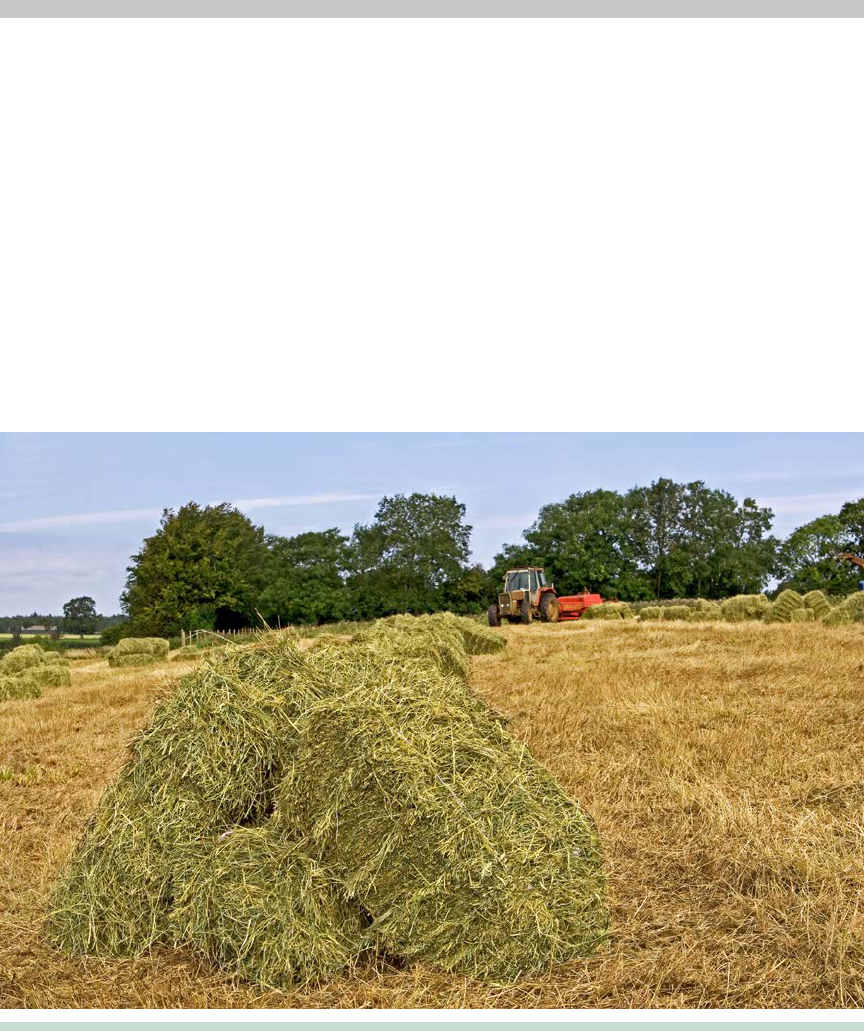
Your Guide to FSA Farm Loans
22
Why Do You Need a Business Plan?
The Purpose of Your Business Plan
Your business plan is like a road map that shows how you will move from where
you are now to where you want your operation to be in the future. A good
business plan that describes your nancial and lifestyle goals will help you to
evaluate your progress as you establish your new operation or continue your
farm or ranch in the future. Your business plan is very important. It shows that
you have seriously thought about your goals and plans for the future and that
you understand all parts of your operation.

Your Guide to FSA Farm Loans
In order to get an FSA loan, a guarantee on a loan
made by a commercial lender, or a land contract
guarantee, you need to create a detailed business plan
that describes:
•
your mission, vision, and goals for your farm or
ranch.
• your current assets (property or investments you
own) and liabilities (debts, loans, or payments
you owe).
• what your operation will produce, and how and
where you will market and sell your products.
is is sometimes referred to as a marketing plan.
• whether the amount of income your operation
will generate will be enough to pay your business
and family living expenses.
23

Your Guide to FSA Farm Loans
A comprehensive business plan is an important rst
step for any size business ‒no matter how simple or
complex. You should create a strong business plan
because it:
•
will help you get organized and can help you
to make sure you are taking all of the necessary
steps and remembering all of the details.
• will act as your guide. It will help you to think
carefully about why you want to farm or ranch
and what you want to achieve in the future.
Over time, you can look back at your business
plan and determine whether you are achieving
your goals.
• is required to get a loan. Lenders look closely at
business plans to determine if you can aord to
repay the loan.
24

Your Guide to FSA Farm Loans
Business Plan Guides for Farmers
and Ranchers
Below are examples of agricultural business planning
guides that can help you think about all of the
important parts of your operation. ese products
are for reference only and do not represent the
opinions of FSA, nor does FSA endorse any specic
commercial product. ere may be other
products available that you would prefer.
Building a Sustainable Business: A Guide to
Developing a Business Plan for Farms and
Rural Businesses
Developed by the Minnesota Institute for Sustainable
Agriculture, and published by the Sustainable
Agriculture Research and Education.
Available free online at:
http://www.misa.umn.edu/Publications/
BuildingaSustainableBusiness/index.htm
25

Your Guide to FSA Farm Loans
26
Small Farm Decision-Making &
Enterprise Planning Workbook
North Carolina State University Cooperative Extension.
(c)1992
Available free online at:
Accion USA Business Plan Template
Accion USA Small Business Resources. (c)2007
Available free online at:
Small Farm
Decision-Making
&
Enterprise Planning
Workbook
STATE UNIVERSITY
A&T STATE UNIVERSITY
COOPERATIVE
EXTENSION
Helping People Put Knowledge to Work
NC
Ways to Grow
ACCION USA
Business Plan
____________________________________
Business Name
____________________________________
Name(s) of Owner(s)
____________________________________
Address, City, State Zip
Phone number: ___________________ Fax number: ___________________
Executive Summary
COMPLETE LAST. This should summarize the major characteristics of your business and plan into one or two
pages (attach additional pages if needed). Copy appropriate parts of Sections 1-2 into this section. If you are
applying for a loan, you will read this executive summary to the group to summarize your business and why you
need a loan.
Write 2-3 short paragraphs on the topics below:
A brief business description, your business mission and your products and services (copy from section 1).
Your customers (income, ethnicity, gender), how large the market is, what part of the market you now serve,
what part of the market you would like to serve, and how you reach your target market.
Your competition and the advantages your business has over other similar businesses.
Your goals for the next three years, including marketing plans, new products or services, and resources
you will need to meet your goals (money, employees, etc.).
If you are applying for a loan, describe your plans for the loan period, indicate how much you are applying
for, how you will use the loan, and how it will help you carry out your plans.
_____________________________________________________________________
_____________________________________________________________________
_____________________________________________________________________
_____________________________________________________________________
_____________________________________________________________________
_____________________________________________________________________
_____________________________________________________________________
_____________________________________________________________________
_____________________________________________________________________
_____________________________________________________________________
_____________________________________________________________________
_____________________________________________________________________
_____________________________________________________________________
_____________________________________________________________________
_____________________________________________________________________
_____________________________________________________________________
_____________________________________________________________________
Business Plan
1
http://agmarketing.extension.psu.edu/begfrmrs/SmlFrmDecisionMAkingWrkbk.pdf
http://www.accionusa.org/Uploads/FileManager/YMY/Business%20Plan%20Template_English.pdf

Your Guide to FSA Farm Loans
27
AgPlan
AgPlan Center for Farm Financial
Management. Regents of the University of
Minnesota (c)2007-2010
Available free online at:
https://www.agplan.umn.edu
Financial Record Keeping for Small Farmers
and Ranchers
Prepared by the Rural Coalition, Rural Coalition
member groups and Intertribal Agriculture Council in
partnership with USDA’s Risk Management Agency
September, 2004
Available free online at:
http://indianaglink.com/nancialcurriculum.html

Your Guide to FSA Farm Loans
Obtaining Assistance To Develop
Your Business Plan
Creating a good business plan takes time and eort.
You may want to nd a business advisor who can
help you with the process. ere are many sources
for professional advice, and it may be helpful to
attend workshops that focus on business planning.
Your FSA loan ocer may be able to assist you
or refer you to an advisor in your area who has
experience in advising farmers and ranchers. e
following are some organizations that provide
assistance in developing business plans:
•
Small Business Counselors (SCORE) is a
nonprot organization with a network of
volunteers who have experience in running
and managing businesses. Its representatives can
give you advice on how to create a good
business plan.
• e USDA’s National Institute of Food and
Agriculture administers the Extension Risk
Management Education (ERME) program
through four regional ERME Centers and a
fth “Digital Center.” e program’s objective
is to educate farmers and ranchers on the full
range of strategies to manage the risks inherent in
agriculture, particularly production, price,
nances, legal issues, and human resource
management. Such strategies may include futures,
28

Your Guide to FSA Farm Loans
29
options, agricultural trade options, crop
insurance, cash forward contracting, debt
reduction, product and enterprise
diversication, farm labor management,
and farm resources risk reduction, among
others.
• Your local Cooperative Extension oce may
also be able to provide you with information
for your operation.
Note: Contact information for FSA, SCORE,
ERME Centers, and Cooperative Extension are
included in Appendix A of this guide.

Your Guide to FSA Farm Loans
30
Business Plan Formats
ere are many dierent styles of business plans. Some are written documents;
others may be a set of worksheets that you complete. No matter what format
you choose, several key aspects of your operation are important to consider.
Use the guidelines below to start thinking about your business plan.
Remember, you will answer these kinds of questions in more detail when you
create your ocial business plan and meet with an FSA loan ocer or another
lender to apply for a loan.
Business Plan Guidelines
1. Are you starting a new farm or ranch, or are you already in business?
• What products do you produce?
• What is the size of your operation?
• Is the ownership structure of your business a sole proprietorship,
partnership, corporation, or other type of entity?
• What agricultural production and nancial management training or
experience do you, your family members, or your business partners have?
• How long have you been in business?
2. What short- and long-term goals do you have for your operation?
• How do you plan to start, expand, or change your operation?
• What plans do you have to make your operation more ecient or
more protable?
• What type of farm or ranch model (conventional, sustainable, organic, or
alternative agricultural practices) do you plan to use?

Your Guide to FSA Farm Loans
31
3. What resources do you have, or will you need, for your business?
• Is the equipment and real estate that you own or rent adequate to
conduct your operation? If not, how do you plan to address those needs?
• What additional resources do you need?
4. Do you have a support system in place?
• What help will you have operating and managing your farm or ranch?
• What other resources, such as a mentor or community-based
organization, do you plan to use?
5. Will the income you generate be sufficient to pay your operating expenses,
living expenses, and loan payments?
• What crops, livestock, or other products do you plan to sell?
• How will you market your products?
• Are the yields and prices you used to estimate your income realistic?
• What other sources of income are available to supplement your business
income?
• What business expenses will you incur?
• What family living expenses do you pay?
• How will you measure the success of your business?

Your Guide to FSA Farm Loans
32
How Do You Apply for a
Guaranteed Loan?
Preparing a Guaranteed Loan
Application
Contact your lender if you are interested in an
FSA guaranteed loan. Your lender will assist you
in preparing the forms needed. e forms for
a guaranteed loan application may be obtained
from the local FSA oce or from the FSA
website at http://forms.sc.egov.usda.gov/eForms/
welcomeAction.do?Home.
Submitting a Guaranteed Loan
Application
Your lender will submit the guaranteed loan
application to FSA.

Your Guide to FSA Farm Loans
33
What Happens After
Your Lender Submits a
Guaranteed Loan Application
to FSA?
FSA’s Processing of the
Guaranteed Application
After receiving the application from your lender,
FSA will:
•
review the application to determine whether all
required forms and documents have been
submitted and provide written notication of any
missing items to the lender within 5 days. You
will receive a copy of this notication.
• provide written notication to the lender within
5 days of receiving all forms and documents that
the application is complete.
• review the application for eligibility, repayment
ability, security, and compliance with other
program requirements.

Your Guide to FSA Farm Loans
34
If the Application for a Guarantee
Is Approved
If the application for a guarantee is approved, FSA
will provide written notication to the lender.
Normally, your lender will schedule the loan
closing as soon as possible after receiving approval.
However, FSA receives funding for guarantees
on a scal-year basis, and the demand for some
guaranteed loan types may exceed the level of
funding received. When this occurs, FSA will notify
the lender that the guarantee is approved subject
to the availability of funds and the loan cannot be
closed until additional funding is received.
Note: For most loans, FSA charges the lender
a guarantee fee of 1.5 percent of the guaranteed
portion of the loan. e lender may pass this fee on
to you. e fee is waived under some circumstances.

Your Guide to FSA Farm Loans
35
If the Application for a Guarantee Is
Not Approved
If the application for a guarantee is not approved,
FSA will provide the lender written notication of:
•
the reason it cannot be approved.
• the opportunity to request:
- reconsideration, which provides the
opportunity to meet with an FSA loan ocer
to present additional information and explain
why FSA’s decision may be in error;
- mediation, which is a process for resolution
of a disagreement. A trained neutral mediator
assists two or more parties who disagree
by looking at the issues, considering all
available options, and attempting to have both
parties agree on an acceptable solution;
- an appeal to the National Appeals Division,
an independent organization within USDA,
where evidence may be presented
demonstrating why FSA’s decision may be
wrong.
• your rights if you believe you have been
discriminated against under the Federal Equal
Credit Opportunity Act or USDA regulations.
Note: You will receive a copy of this notication.

Your Guide to FSA Farm Loans
36
How Will Your Guaranteed
Loan Be Serviced?
Lender Responsibilities
Lenders must supervise guaranteed loan borrowers
in a manner similar to the supervision of their other
agricultural loan customers. Lenders are expected to
apply standard agricultural loan servicing principles
to their guaranteed customers.
Your Responsibilities
As a guaranteed loan borrower, you are responsible
for complying with all loan agreements you have
with your lender.
FSA Responsibilities
FSA will monitor the lender’s supervision of
guaranteed loan borrowers and will provide written
notication of any deciencies.

Your Guide to FSA Farm Loans
37
How Do You Apply for a
Direct Loan?
Preparing Your Direct Loan Application
You may obtain the forms for a direct loan
application by visiting your local oce or from the
FSA website at http://forms.sc.egov.usda.gov/eForms/
welcomeAction.do?Home. Your FSA loan ocer can
provide assistance in completing the FSA forms or
can identify other sources of assistance in your area.
Although it may take time to gather the information
to prepare your application, it will save time when
FSA is reviewing your application.

Your Guide to FSA Farm Loans
38
Form Title Description of Use
FSA-2001
Request for Direct Loan Assistance
FSA-2002
ree-year Financial History
FSA-2003
ree-Year Production History
FSA-2004
Authorization to Release Information
FSA-2005
Creditor List
FSA-2037
Farm Business Plan
Worksheet Balance Sheet
FSA-2038
Farm Business Plan
Worksheet Projected Actual Income
and Expense
FSA-2302
Description of Farm Training
and Experience
Used to obtain general information regarding your
business, and the amount and planned use of the loan
requested.
Used to gather 3 years of nancial history for your
operation.
Used to gather 3 years of production history for your
operation.
Authorizes your employers, nancial institutions, and
creditors to verify and provide FSA with your
employment, income, or other nancial information in
connection with submission of your application.
Used to gather information regarding your creditors.
Used to gather information on your assets and liabilities.
Used to gather your income and expense information.
Provides details on your farm or ranch training and
experience if you are a new applicant or are adding a
new enterprise to your operation.
A direct loan application includes the following forms and documents.

Your Guide to FSA Farm Loans
39
Additional Requirements Description of Use
Tax Returns (3 years)
Leases and Contracts
Environmental Compliance
Credit Report Fee
e income and expenses reported on your tax
returns will be used to evaluate your business
history.
Farm lease, rental agreements, or other
contracts that aect the operation of your
business.
An FSA loan ocer will help you in
determining if you have met all applicable
environmental regulations and requirements.
You will have to pay a credit report fee so FSA
can obtain your credit history. e amount of
the fee varies, depending on the structure of
your business and how many people are
applying for the loan.
Note: Additional forms and documents may be needed. Your FSA loan ocer
will advise if additional information is required.
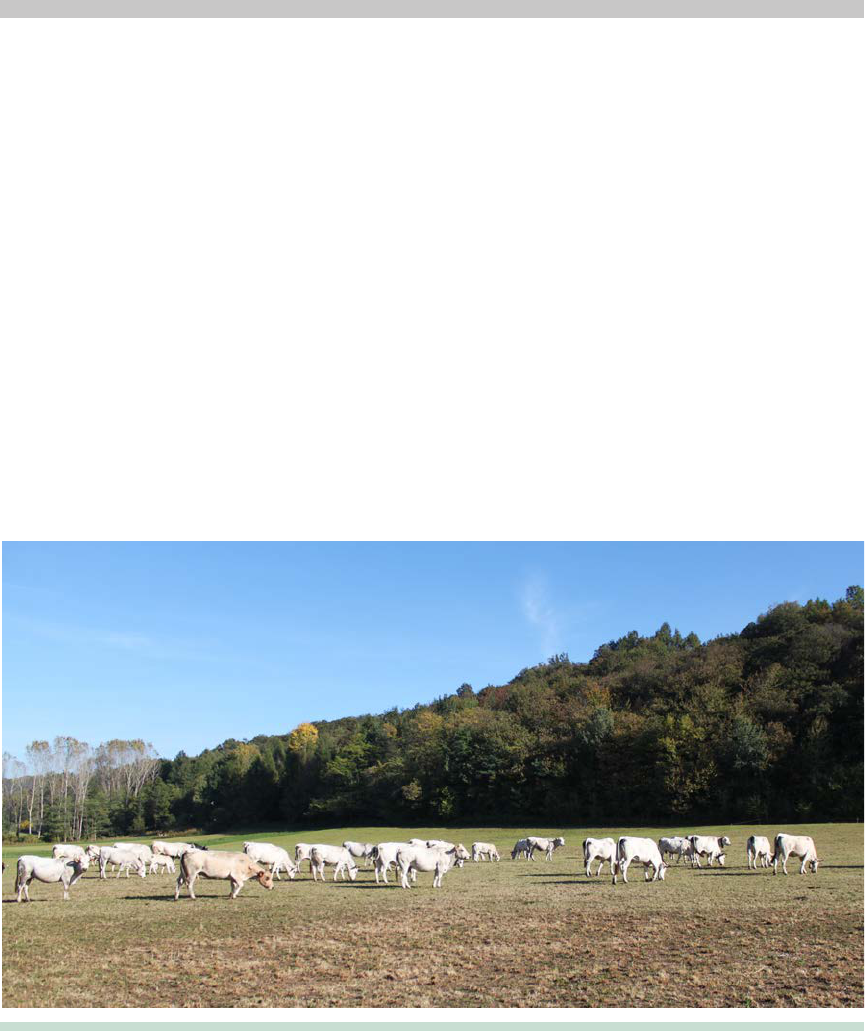
Your Guide to FSA Farm Loans
40
Submitting Your Direct Loan Application
You may submit your application by:
•
calling for an appointment with an FSA loan ocer;
• mailing, faxing, or delivering your application to your local FSA oce; or
• electronically submitting your application if you have registered through the
e-gov system.
Note: For more information on submitting your application electronically,
please visit the website http://forms.sc.egov.usda.gov/eForms/
welcomeAction.do?Home.

Your Guide to FSA Farm Loans
41
What Happens After You
Submit Your Direct Loan
Application to FSA?
FSA’s Processing of Your Direct Loan
Application
After receiving your application, FSA will:
•
provide written notication of receipt within
2 days.
• review your application to determine if all
required forms and documents have been
submitted and notify you in writing within 10
days if any items are missing.
• provide written notication within 10 days of
receiving all forms and documents that your
application is complete.
• make a nal decision on your loan application
within 60 days of receiving all required forms and
documents.

Your Guide to FSA Farm Loans
42
Helpful Hints:
•
In most cases, FSA will schedule a meeting
shortly after receiving your loan application to
discuss your request.
• Be sure to ask questions if there is anything you
do not understand. Your FSA loan ocer will
explain anything that you do not understand.
FSA may provide technical assistance or refer you
to a subject-matter expert.
• If you are not satised with the level of service
that you are receiving from the local FSA oce,
you may contact the applicable FSA State
Oce or FSA National Headquarters. e
contact numbers for these oces may be found at
http://www.fsa.usda.gov.

Your Guide to FSA Farm Loans
43
If Your Direct Loan Is Approved
If your loan is approved, FSA will provide written
notication of:
•
the approved use of loan funds
• the interest rate
• the term of the loan
• the collateral that you will have to pledge to
secure the loan
• when loan funds are expected to be available
• any pre-loan closing requirements
• your responsibilities as an FSA direct loan
borrower.
You will need to sign and return the letter accepting
the loan conditions.
Helpful Hint: Make sure you understand the loan
conditions and your responsibilities. Contact your FSA
loan ocer if you have any questions.

Your Guide to FSA Farm Loans
44
Loan closing will be scheduled as soon as possible
after loan approval. Normally, loan funds are
provided within 15 days of approval. However, FSA
receives funding for loans on a scal year basis, and
the demand for some loan types may exceed the level
of funding received. When this occurs, a loan can be
approved subject to the availability of funding, but it
cannot be closed until additional funding is received.
Operating loans will be closed by your FSA loan
ocer.
Farm ownership loans will be closed by an attorney
or title agency of your choice. However, if a lien will
be taken on tribal lands held in trust or restricted
status, a Title Status Report and approval of the lien
from the Bureau of Indian Aairs is required.
At closing, you will sign several documents,
including a promissory note and lien instruments to
secure the loan. Keep all of your loan documents,
loan closing paperwork, and nancial records
together in a safe place so you can nd them easily.

Your Guide to FSA Farm Loans
45
If Your Direct Loan Is Not Approved
If your loan is not approved, FSA will provide
written notication of:
•
the reason your loan cannot be approved.
• your opportunity to request:
- reconsideration, which provides you with the
opportunity to meet with the FSA loan ocer
to present additional information and explain
why you believe FSA’s decision may be
in error;
- mediation, which is a process for resolution of
a disagreement. A trained neutral mediator
assists two or more parties who disagree
by looking at the issues, considering all
available options, and attempting to agree on
an acceptable solution;
- an appeal to the National Appeals Division,
an independent organization within USDA,
where you may present evidence which
demonstrates why you believe that FSA’s
decision may be wrong.
• your rights if you believe you have been
discriminated against under the Federal Equal
Credit Opportunity Act or USDA regulations.

Your Guide to FSA Farm Loans
46
Note: If your loan is not approved, your FSA loan ocer may be able to advise
you of potential actions or alternatives that might help resolve the issues that
resulted in the denial of your loan request.

Your Guide to FSA Farm Loans
47
What Are Your
Responsibilities as a Direct
Loan Borrower?
After you receive your loan, it is your responsibility
to:
•
follow the business plan on which your loan was
based; it is your blueprint for success.
• always pay your loan on time. If you cannot
make payments to suppliers, other creditors,
or FSA on time, contact your FSA loan ocer
immediately to discuss loan servicing options that
may be available to assist you.
• keep good business records that include all:
- farm operating and family living expenses.
- income from crops, livestock, and other
sources.

Your Guide to FSA Farm Loans
48
• maintain loan security, which includes:
- keeping livestock safe, healthy, and well fed.
- maintaining all real estate, buildings, and
machinery.
- paying insurance, real estate taxes, and other
taxes when due.
- not placing any additional liens or
encumbrances on the property that you
pledged as collateral to secure your loan
without rst getting FSA’s permission.
• attend any required production and/or nancial
management skills training.
• talk with your FSA loan ocer to change your
business plan:
- if you need to make expenditures outside the
business plan or need to change it for any
reason.
- if you plan to sell any portion of your crop
and/or livestock in a dierent way than
described in your business plan.
- when you propose to sell or trade any
equipment.
• have checks you receive from buyers made jointly
payable to you and FSA. (FSA will release these
proceeds to you in accordance with your business
plan.)

Your Guide to FSA Farm Loans
49
What Credit Supervision
Does FSA Provide to Direct
Loan Borrowers?
FSA will provide oversight, technical assistance,
and management expertise to assist in various
ways to help you succeed while also protecting the
Government’s interest.
Year-End Analyses
At the end of each business cycle, your FSA loan
ocer will make an appointment with you to:
•
review your records;
• help you plan for the following year’s operation,
including determining if additional loan
assistance is needed from FSA; and
• help you review your business plan and make any
changes.
Chattel Checks
During the year, FSA ocials may make periodic
reviews or “chattel checks” to look at crops,
equipment, and livestock that you have pledged
as security or collateral for your loan. FSA will
also work with you to account for your livestock,
equipment, and other collateral and to make sure

Your Guide to FSA Farm Loans
50
that the livestock are healthy and equipment is in
good repair.
Normal Income Security
Normal income security is the crops and livestock
that you produce on your farm or ranch that FSA
nanced. e income from the sale of this security
can be released to you in accordance with your
business plan.
Basic Security
Basic security refers to real estate, equipment,
machinery, and foundation and breeder livestock,
herds, and ocks that secure your loan. is
property must be maintained and kept in good repair
throughout the term of the loan. It is also very
important that you do not sell or trade any of this
security property without discussing it rst with your
local FSA oce.
Graduating to Commercial Credit
FSA provides temporary credit to assist farmers or
ranchers when they cannot get commercial loans.
When you make sucient nancial progress to
operate without FSA assistance, you will be asked
to graduate by renancing your FSA loans with a
commercial lender. is can be accomplished with
or without an FSA guarantee on the commercial
loan.

Your Guide to FSA Farm Loans
51
What Loan Servicing Options
Will Be Available to Direct
Loan Borrowers?
If it appears that you will not be able to make a
scheduled payment, or you become delinquent on
your FSA loan, FSA oers servicing options to help
avoid or resolve delinquency.
Disaster Set-Aside (DSA)
Under certain circumstances, FSA can move one
annual payment to the end of your loan if you are
not able to make the payment on schedule. is
set-aside payment will include the unpaid interest
and any principal due for that payment. Interest
will accrue on any principal portion of the set-
aside at the same rate charged on the balance of the
loan. is benet is available only in disaster areas
designated by the President, Secretary of Agriculture,
or FSA Administrator. FSA will inform you of the
availability of a disaster set-aside by mail and through
news releases if your county is designated.

Your Guide to FSA Farm Loans
52
Example: Sarah ompson believes that she will not be
able to make all her scheduled payments, and she sees an
announcement in the paper that her county received a
disaster designation. She can go to the local FSA oce
and inquire about applications for both emergency
loans and DSA, even if she has not yet received her DSA
announcement directly from FSA. An FSA loan ocer
can assist her in determining if she qualies for an
emergency loan and DSA.
Primary Loan Servicing (PLS) for
Financially Distressed and Delinquent
Borrowers
If you are not able to make your payment or you
become delinquent on your loan, you may want to
be considered for PLS. Under this program, your
loan may be restructured if your inability to make
your payment is due to circumstances beyond your
control. Debt write-down may be considered in
restructuring your loan if you are delinquent.
If you apply for PLS and cannot develop a plan that
shows you can repay your existing debt, you may
pay FSA the lower of the current market value of the
loan collateral or the full amount you owe. If you
are unable to pay the lower of these two amounts,
then FSA will be required to move ahead with debt
collection by declaring the entire debt due

Your Guide to FSA Farm Loans
53
and payable (acceleration) and eventually selling
the property you pledged as collateral. During
this process, FSA may oset any eligible Federal
payments from USDA or other Government sources,
which will be credited to your account.
PLS is used instead of DSA for more severe
delinquencies or when the operation needs more
long-term relief. FSA will notify you of the
availability of PLS when you become more than
90 days past due on your payments. It is very
important that you read the notice carefully and
provide a servicing application to FSA within 60
days. Contact FSA if there is anything that you do
not understand or if you need assistance completing
your application.
Example: David Jones was a little over 3 months
late on his FSA loan payments due to adverse weather
conditions and a crop failure last year. He received
notication in the mail from his local FSA oce
advising him of available loan servicing options that
must be requested within 60 days of his receipt of the
notication. e forms he needs in order to apply were
included with the notication. He may want to make
an appointment with the FSA oce or get help from
a nancial or legal professional. If he applies for loan
servicing, FSA may be able to restructure his annual
payments to better match his operation. If he does
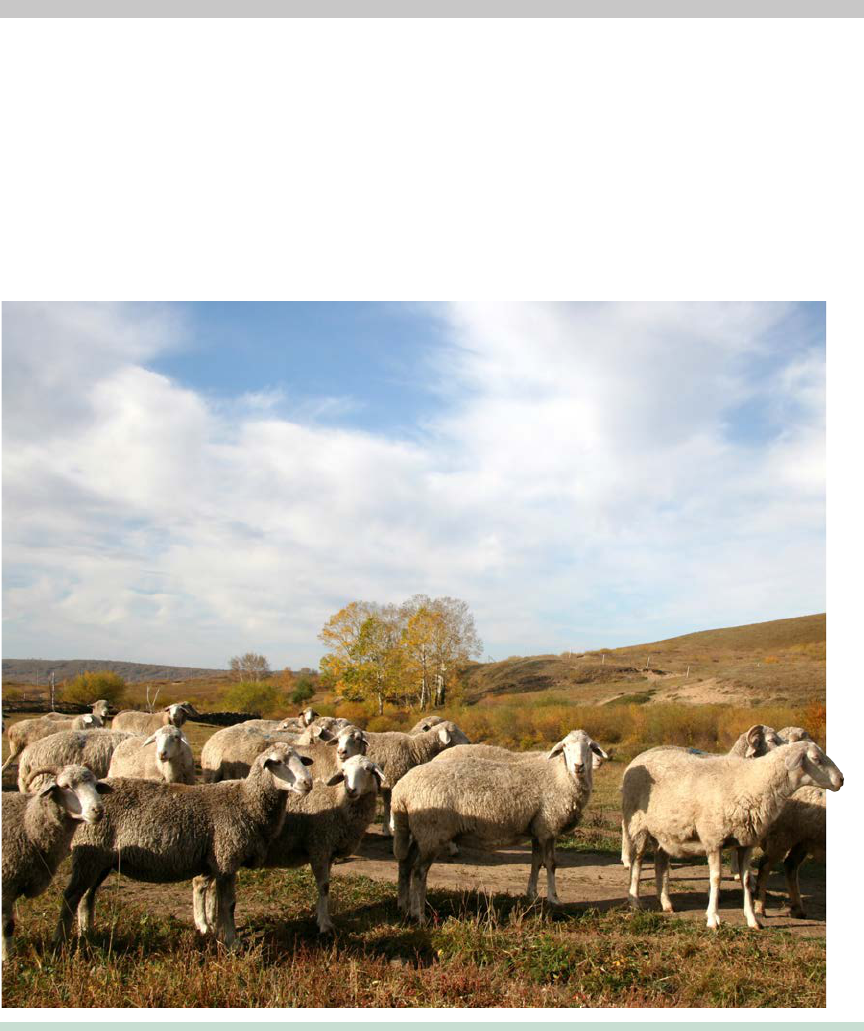
Your Guide to FSA Farm Loans
54
not make his payment or apply for loan servicing, he
will be notied of his right to request reconsideration,
mediation, and/or appeal. If these options do not result
in a resolution, the Government will move to oset any
payments or refunds he is to receive, accelerate (declare
his loans due and payable), and sell his loan security.

Your Guide to FSA Farm Loans
55
How Do You Apply for a Land
Contract Guarantee?
Preparing a Land Contract Guarantee
Application
You may obtain the forms for a land contract
guarantee application b
y visiting your local o ce or
from the FSA website at
http://forms.sc.egov.usda.gov/eForms/welcomeAction.do?Home.
You will need to complete most of the application
forms; however, there is one form that will need to
be completed by the seller. Your FSA loan o cer can
provide assistance in completing the FSA forms or
can identify other sources of assistance in your area.

Your Guide to FSA Farm Loans
56
Submitting a Land Contract Guarantee
Application
You or the seller can submit the land contract
application to FSA by:
•
calling for an appointment with an FSA loan
ocer;
• mailing, faxing, or delivering your application to
your local FSA oce; or
• electronically submitting your application if you
have registered through the e-gov system.
Note: For more information on submitting
your application electronically, please visit
the website http://forms.sc.egov.usda.gov/eForms/
welcomeAction.do?Home.

Your Guide to FSA Farm Loans
57
What Happens After You
or the Seller Submits a
Land Contract Guarantee
Application?
FSA’s Processing of the Land Contract
Guarantee Application
After receiving your application, FSA will:
•
review your application to determine if all
required forms and documents have been
submitted and notify you and the seller in writing
within 10 days if any items are missing.
• provide written notication to you and the seller
after receiving all forms and documents that your
application is complete.
If the Application for a Land Contract
Guarantee Is Approved
If the application for a land contract guarantee is
approved, FSA will arrange for the guarantee to be
signed by you, the seller, and the escrow or servicing
agent.

Your Guide to FSA Farm Loans
58
If the Application for a Land Contract
Guarantee Is Not Approved
If the application for a land contract guarantee is not
approved, FSA will provide you and the seller written
notication of:
• the reason it cannot be approved.
• the opportunity to request:
- reconsideration, which provides you with the
opportunity to meet with an FSA loan ocer
to present additional information and explain
why you believe FSA’s decision may be
in error;
- mediation, which is a process for resolution
of a disagreement. A trained neutral mediator
assists two or more parties who disagree
by looking at the issues, considering all
available options, and attempting to agree
on an acceptable solution;
- an appeal to the National Appeals Division,
an independent organization within USDA,
where you may present evidence which
demonstrates why you believe that FSA’s
decision may be wrong.
• your rights if you believe you have been
discriminated against under the Federal Equal
Credit Opportunity Act or USDA regulations.
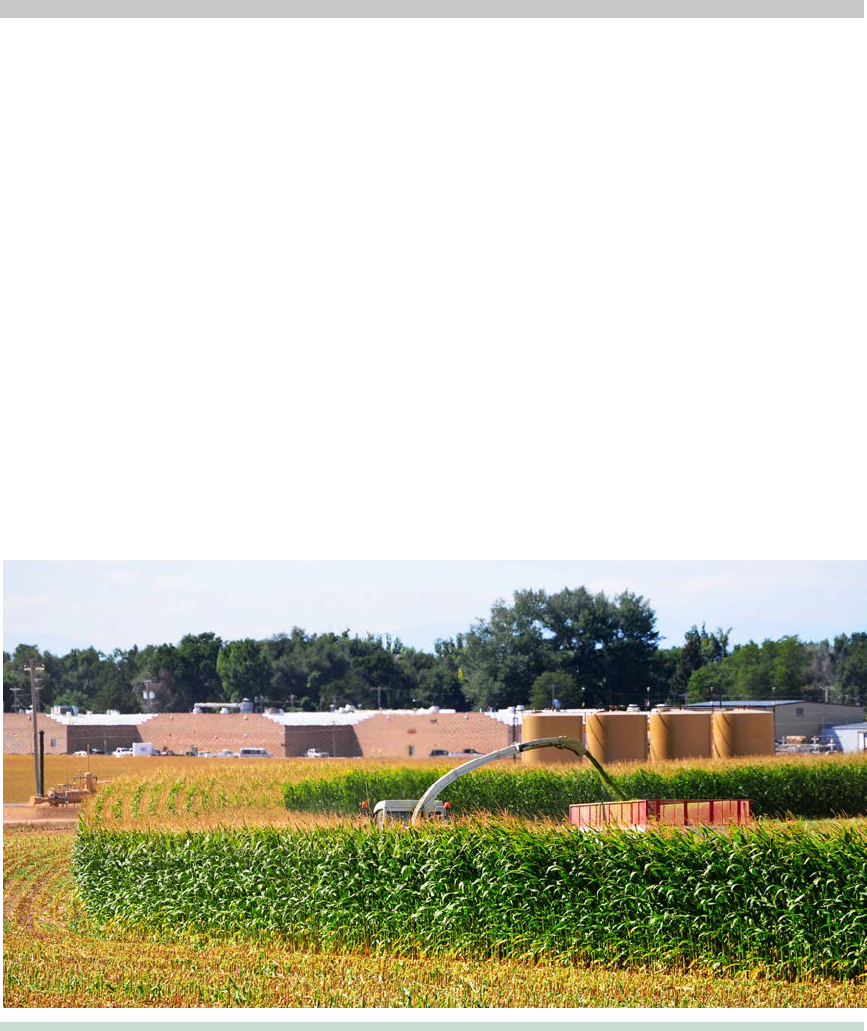
Your Guide to FSA Farm Loans
59
How Will Your Land Contract
Guarantee Be Serviced?
Escrow or Servicing Agent
Responsibilities
e escrow or servicing agent will handle
transactions relating to the land contract between the
buyer and the seller, including receiving payments
from the buyer and sending them to the seller.
Your Responsibilities
You are responsible for complying with the terms of
the land contract and guarantee agreements.

Your Guide to FSA Farm Loans
60
Special Considerations for American
Indian/Alaskan Native Producers and/or
Any Producer Utilizing Land Held in Trust
by the Bureau of Indian Affairs
If you are considering utilizing land held in trust by the United States
Government, through the U.S. Department of the Interior’s Bureau of Indian
Aairs (BIA), this arrangement should be discussed with the appropriate BIA
sta. is includes American Indian producers who wish to potentially utilize
allotted trust land as collateral to secure their loan, any producer who would
lease trust land as part of an agricultural operation, or any producer who will
enter into a contract with a tribe to operate an agricultural operation. To
determine whether this is applicable, you should utilize the contact information
and website below.
Bureau of Indian Affairs
Mailing Address:
Bureau of Indian Aairs
MS-4606
1849 C Street, N.W.
Washington, D.C. 20240
Website: http://www.bia.gov/
Telephone: (202) 208-5116
Telefax: (202) 208-6334

Your Guide to FSA Farm Loans
61
Appendix A: Resources and Contact
Information
USDA Agencies
Agricultural Marketing Service (AMS)
Website: http://www.ams.usda.gov
AMS facilitates the strategic marketing of agricultural products in domestic
and international markets while ensuring fair trading practices and promoting
a competitive and ecient marketplace. AMS constantly works to develop new
marketing services to increase customer satisfaction.
Agricultural Research Service (ARS)
Website: http://www.ars.usda.gov
ARS is USDA’s principal in-house research agency. ARS leads America towards
a better future through agricultural research and information.
Animal and Plant Health Inspection Service (APHIS)
Website: http://www.aphis.usda.gov
APHIS provides leadership in ensuring the health and care of animals and
plants. e agency improves agricultural productivity and competitiveness and
contributes to the national economy and the public health.

Your Guide to FSA Farm Loans
62
Center for Nutrition Policy and Promotion (CNPP)
Website: http://www.cnpp.usda.gov
CNPP works to improve the health and well-being of Americans by developing
and promoting dietary guidance that links scientic research to the nutrition
needs of consumers.
Economic Research Service (ERS)
Website: http://www.ers.usda.gov
ERS is USDA’s principal social science research agency. Each year, ERS
communicates research results and socioeconomic indicators via briengs,
analyses for policymakers and their stas, market analysis updates, and major
reports.
Farm Service Agency (FSA)
Website: http://www.fsa.usda.gov
e Farm Service Agency implements agricultural policy; administers credit
and loan programs; and manages conservation, commodity, disaster, and farm
marketing programs through a national network of oces.

Your Guide to FSA Farm Loans
63
Food and Nutrition Service (FNS)
Website: http://www.fns.usda.gov
FNS increases food security and reduces hunger in partnership with
cooperating organizations by providing children and low-income people access
to food, a healthy diet, and nutrition education in a manner that supports
American agriculture and inspires public condence.
Food Safety and Inspection Service (FSIS)
Website: http://www.fsis.usda.gov
FSIS enhances public health and well-being by protecting the public from
foodborne illness and ensuring that the Nation’s meat, poultry, and egg
products are safe, wholesome, and correctly packaged.
Foreign Agricultural Service (FAS)
Website: http://www.fas.usda.gov
FAS works to improve foreign market access for U.S. products. is USDA
agency operates programs designed to build new markets and improve the
competitive position of U.S. agriculture in the global marketplace.
Forest Service (FS)
Website: http://www.fs.usda.gov
FS sustains the health, diversity, and productivity of the Nation’s forests and
grasslands to meet the needs of present and future generations.

Your Guide to FSA Farm Loans
Grain Inspection, Packers, and Stockyards Administration (GIPSA)
Website: http://www.gipsa.usda.gov
GIPSA facilitates the marketing of livestock, poultry, meat, cereals, oilseeds,
and related agricultural products. It also promotes fair and competitive trading
practices for the overall benet of consumers and American agriculture. GIPSA
ensures open and competitive markets for livestock, poultry, and meat by
investigating and monitoring industry trade practices.
National Agricultural Library (NAL)
Website: http://www.nal.usda.gov
NAL ensures and enhances access to agricultural information for a better
quality of life.
National Agricultural Statistics Service (NASS)
Website: http://www.nass.usda.gov
NASS serves the basic agricultural and rural data needs of the country by
providing objective, important, and accurate statistical information and services
to farmers, ranchers, agribusinesses, and public ocials. is data is vital to
monitoring the ever-changing agricultural sector and carrying out farm policy.
National Institute of Food and Agriculture (NIFA)
Website: http://www.nifa.usda.gov
NIFA’s unique mission is to advance knowledge for agriculture, the
environment, human health and well-being, and communities by supporting
64

Your Guide to FSA Farm Loans
65
research, education, and extension programs in the Land-Grant University
System and other partner organizations. NIFA does not perform actual
research, education, and extension, but rather helps fund it at the State and
local level and provides program leadership in these areas.
Natural Resources Conservation Service (NRCS)
Website: http://www.nrcs.usda.gov
NRCS provides leadership in a partnership eort to help people conserve,
maintain, and improve our natural resources and environment.
Risk Management Agency (RMA)
Website: http://www.rma.usda.gov
RMA helps to ensure that farmers have the nancial tools necessary to manage
their agricultural risks. RMA provides coverage through the Federal Crop
Insurance Corporation, which promotes national welfare by improving the
economic stability of agriculture.
Rural Development (RD)
Website: http://www.rurdev.usda.gov
RD helps rural areas to develop and grow by oering Federal assistance that
improves quality of life. RD targets communities in need and then empowers
them with nancial and technical resources.

Your Guide to FSA Farm Loans
Online Resources
Start2Farm.gov
Website: http://www.Start2Farm.gov
Start2Farm.gov is an online database connecting beginning farmers and
ranchers with available programs and resources created by USDA’s National
Agricultural Library, in partnership with the American Farm Bureau Federation.
Note: Start2Farm.gov is for reference only and does not represent the opinions
of FSA, nor does FSA endorse any specic commercial product. ere may
be other products, programs, and services available that could better meet the
specic needs of individual farmers and ranchers.
Other Organizations
Cooperative Extension System Oces
Website: http://www.nifa.usda.gov
Each U.S. State and territory has a Cooperative Extension State oce at its
land-grant university and a network of local or regional oces. ese oces are
staed by one or more experts who provide useful, practical, and research-based
information to agricultural producers, small business owners, youth, consumers,
and others in rural areas and communities of all sizes.
66

Your Guide to FSA Farm Loans
Small Business Counselors (SCORE)
Website: http://www.score.org
SCORE, a nonpro
t organization, is a network of volunteers who provide
resources to help entrepreneurs start, grow, and succeed in their business.
SCORE operates through 364 chapters located throughout the United States
and provides con dential business counseling services at no charge.
Extension Risk Management Education (ERME) Centers
W
ebsite:
http://www.nifa.usda.gov/nea/economics/in_focus/farm_if_risk.html
e four regional ERME centers provide funds on a competitive basis to
extension educators and farm management consultants who have the expertise
to develop and deliver risk mitigation materials to agricultural producers. e
Digital Center serves as the clearinghouse for risk management material and
provides risk management curricula, information, tools, and assistance through
an online resource called the National Ag Risk Education Library.
Additional Resources for American Indians/Alaskan Natives
I
ntertribal Agriculture Council (IAC)
Website: http://www.indianaglink.com
e Intertribal Agriculture Council pursues and promotes conservation,
development, and use of agricultural resources for the betterment of American
Indians/Alaskan Natives.
67

Your Guide to FSA Farm Loans
IAC Regional Technical Assistance Program Oces
Website: http://www.iactechhelp.com/regions
rough assistance from USDA’s Oce of Tribal Relations, the Intertribal
Agriculture Council has established IAC Regional Technical Assistance Program
Oces. ese regional oces provide technical assistance and outreach to
Indian producers and tribes. ey provide guidance through the regulations
and processes of Federal agencies and:
•
teach intensive nancial, business, and marketing planning skills and
understanding of basic and advanced farm and ranch business management
skills to American Indian/Alaskan Native farmers and ranchers;
• teach leasing requirements for tribal trust and restricted lands to American
Indian/Alaskan Native farmers and ranchers in coordination with the
Bureau of Indian Aairs; and
• support the deployment of tribal agriculture advocates and technical
assistance providers in key locations throughout Indian Country, who will
serve alongside consolidated sub-oces at tribal headquarters, tribal
agriculture USDA liaisons, third-party regional employees, and others.
Indian Land Tenure Foundation
Website: http://www.iltf.org
e Indian Land Tenure Foundation is a community-based nonprot
organization focused on the recovery, management, and control of American
Indian lands by Indian people. ey work with Indian people, Indian
organizations, tribal communities, tribal governments, and others connected to
Indian land issues.
68
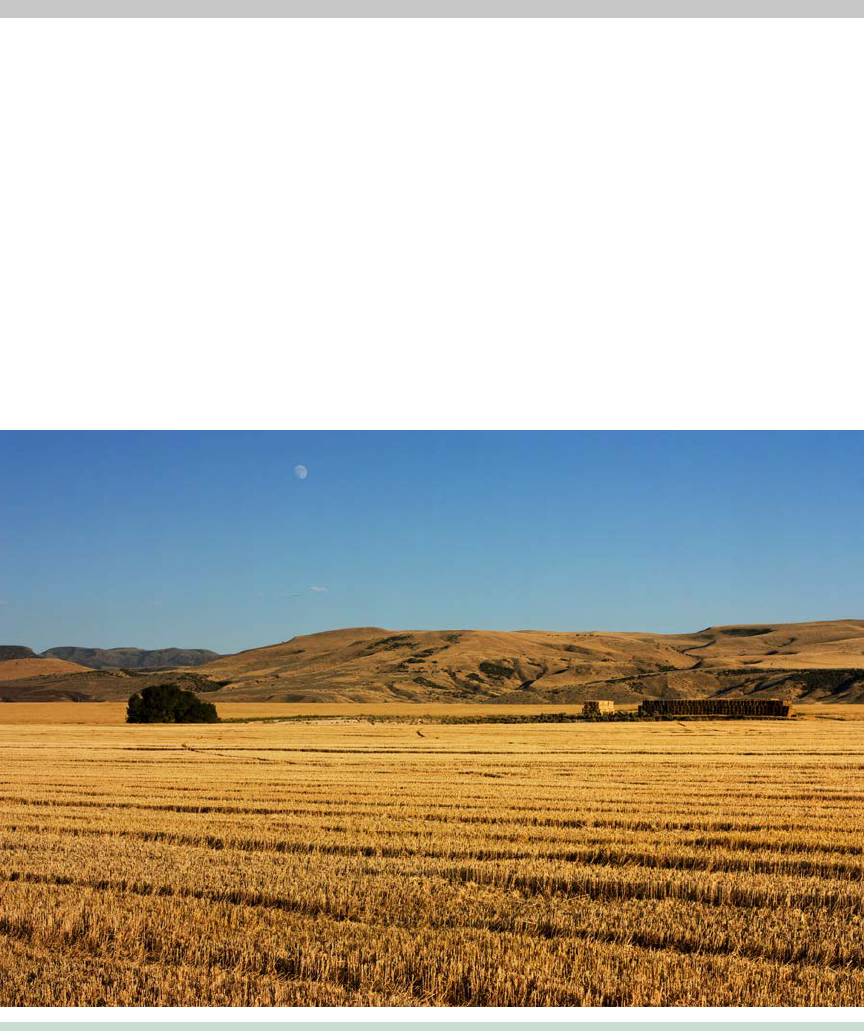
Your Guide to FSA Farm Loans
69
Indian Land Working Group
Website: http://indianlandworkinggroup.org
e Indian Land Working Group is dedicated to the restoration and recovery of
the native land base and the control, use, and management of this land base by
tribal communities.
Note: e information describing these organizations was obtained primarily
from their websites.

Your Guide to FSA Farm Loans
70
Appendix B: Definition of Terms
Assets: Property owned by a person, both tangible (for example, land,
buildings, vehicles) and intangible (for example, training, experience).
Default: e failure of a borrower to observe any agreement with the agency,
or the lender in the case of a guaranteed loan, as contained in promissory notes,
security instruments, and similar or related instruments.
Escrow Agent: A third-party agent selected by a seller who has obtained
a prompt payment guarantee under the Land Contract Guarantee Program.
Escrow agents must be bonded and may include title insurance companies,
attorneys, nancial institutions, or any scally responsible institution as
determined and approved by FSA.
Family farm: A farm or ranch that produces agricultural commodities for
sale in sucient quantities so that it is recognized as a farm or ranch rather
than a rural residence. Both physical labor and management are provided by
the borrower, entity member, or family members. Hired labor may be used to
supplement family labor, such as temporary labor for seasonal peak workloads.
Foreclosure: e act of selling security by a lender, either under the power
of sale in the security instrument or through judicial proceedings.

Your Guide to FSA Farm Loans
71
Land Contract: An installment contract between a buyer and a seller for
the sale of real property, in which complete ownership of the property is not
transferred until all payments under the contract have been made.
Liabilities: Debts that a person or business owes.
Lien: A legally enforceable claim against real or chattel property of another
obtained as security for the repayment of indebtedness, or an encumbrance on
property to enforce payment of an obligation.
Promissory note: A written agreement to pay a specied sum on demand
or at a specied time to the party designated.
Security instrument: Any document giving the agency a security interest
on real or personal property.
Servicing Agent: A third-party agent selected by a seller who has obtained
a standard guarantee under the Land Contract Guarantee Program. Servicing
agents must be bonded commercial lending institutions or similar entities that
are registered and authorized to provide escrow and collection services in the
State in which the real estate is located.

Your Guide to FSA Farm Loans
72
is booklet is modeled on a guide that was originally developed by the New
Entry Sustainable Farming Project, Northeast Network of Immigrant Farming
Projects, in September 2007. at guide was authored by Vanessa Bitterman
and reviewed by Jennifer Hashley, New Entry Sustainable Farming Project
Director, and David DeFreest, FSA Loan Ocer, Westford, MA.

United States Department of Agriculture
Farm Service Agency
June 2012
FSA-BR-01
The U.S. Department of Agriculture (USDA) prohibits discrimination in all its programs and activities on the
basis of race, color, national origin, age, disability, and where applicable, sex, marital status, familial status,
parental status, religion, sexual orientation, genetic information, political beliefs, reprisal, or because all or
part of an individual's income is derived from any public assistance program. (Not all prohibited bases
apply to all programs.) Persons with disabilities who require alternative means for communication of
program information (Braille, large print, audiotape, etc.) should contact USDA's TARGET Center at
(202) 720-2600 (voice and TDD). To file a complaint of discrimination, write to USDA, Assistant Secretary
for Civil Rights, Office of the Assistant Secretary for Civil Rights, 1400 Independence Avenue, S.W.,
Stop 9410, Washington, DC 20250-9410, or call toll-free at (866) 632-9992 (English) or
(800) 877-8339 (TDD) or (866) 377-8642 (English Federal-relay) or (800) 845-6136 (Spanish Federal-relay).
USDA is an equal opportunity provider and employer.
United States Department of Agriculture
F
arm Service Agency
Your Guide to FSA Farm Loans
